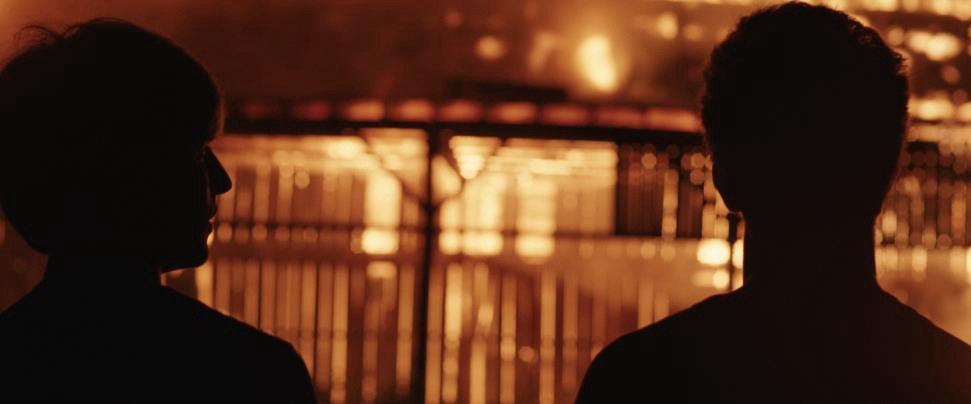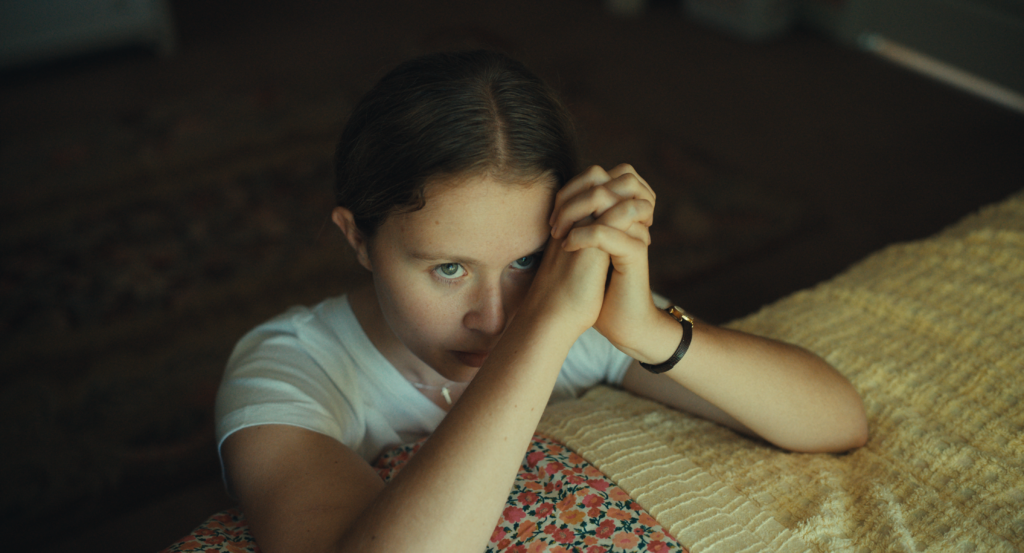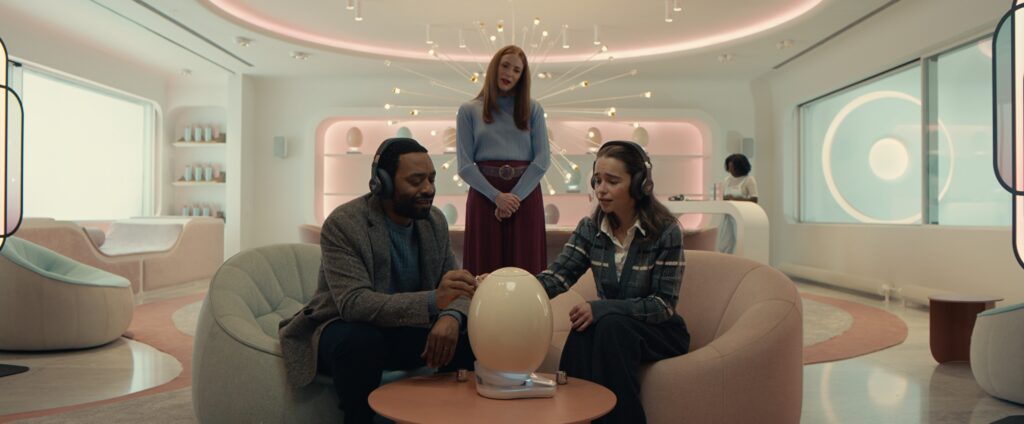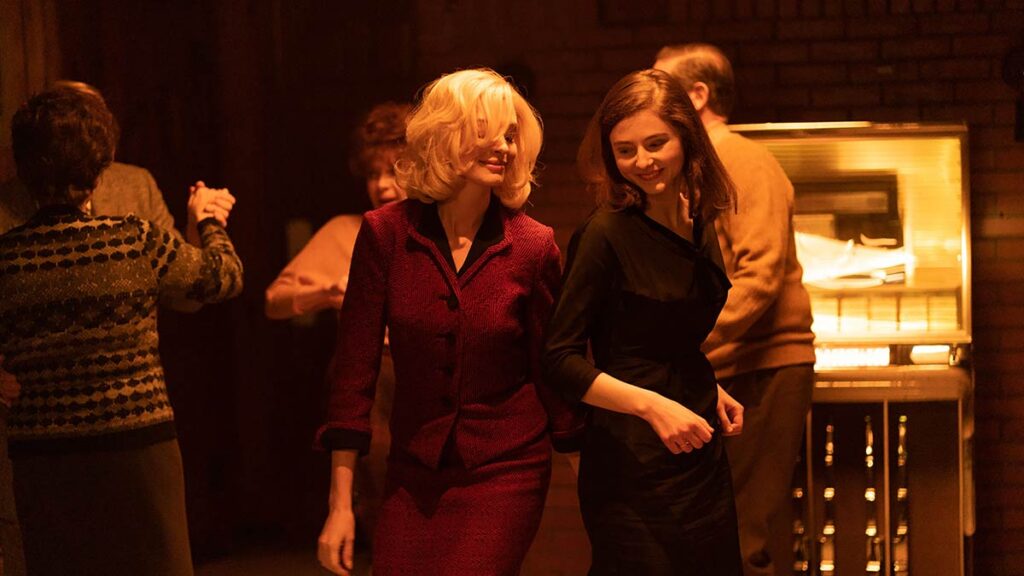Rachel Lambert received a BFA from Boston University and also studied at the London Academy of Music and Dramatic Art. After graduating, she worked for HanWay Films in addition to writing and producing theater at the Battersea Arts Centre, Finborough Theatre, and the National Theatre. Since moving to New York, Lambert has concentrated on filmmaking and has written three films with her writing partner, including her directorial debut “In the Radiant City” and the feature documentary “Mom Jovi.”
“In the Radiant City” will premiere at the 2016 Toronto International Film Festival on September 11.
W&H: Describe the film for us in your own words.
RL: Twenty years ago, a 17-year-old boy, Michael, killed a boy much younger than him, and the only witness was his brother Andrew. Andrew testified against Michael, which tore his family apart, sending Andrew running off at just 16 to fend for himself, and leaving his remaining family — an older sister and his mother — to make up a life that could somehow make sense again.
Today, Michael, that teenager put away for life in prison, has the opportunity to reduce his sentence. And Andrew could help with that, if he cares to. And things once broken could maybe be put back together. And “In the Radiant City” sets out to explore if any of that is even possible for these people.
W&H: What drew you to this story?
RL: I was initially catalyzed by an article I read in the New York Times, entitled “Killers’ Families Left to Confront Fear and Shame.” I had yet in my life to read such a deft turn of journalism that profiled voices from that side of a violent narrative — finding humanity in something so inhuman.
I was particularly drawn to one of the families profiled, wherein a sister turned in her brother for a series of murders. As a result, this family seemed plagued with an uncommon kind of trauma, one that frustrated my natural inclination to assign the players with either “good” or “bad.”
That ambiguity seemed potent, so I felt the need to reach out to the journalist, who supplied me with insights from his research and then pointed me in the direction of wonderful sources, and all of that led me to feeling I had the ingredients I needed to construct a fictional story that would allow me to explore these themes and ideas in the way I wanted.
W&H: What do you want people to think about when they are leaving the theater?
RL: I hope they are left with questions to answer, frankly. For themselves. I hope folks watch it and feel provoked to contemplate the implications of a stark and binary justice system. And I hope the same mixed emotion that is presented in the final scene, that of the paradoxical coexistence of love and anger, extends to a greater conversation about the shades of grey that we all live in.
W&H: What was the biggest challenge in making the film?
RL: Time. Not having enough of it. Ever.
W&H: How did you get your film funded? Share some insights into how you got the film made.
RL: It’s independently financed by Candlewood Entertainment, and, more specifically, by my producer Sonny Mallhi. The road to [Sonny] began with Jeff Nichols, who really is the reason I have a career in this business at all. He introduced the project, and me, to Alex Saks while she was at ICM.
She then worked her magic and got it into Sonny’s hands and pretty much within 24 hours of reading the script, and having a lengthy phone call with me, he bravely committed to the film. And not only committed to my script, but to the things that I was immovable on, and that were probably deterrents to many other financiers: I was going to shoot it in Kentucky with my cast, with my DP, in the summer.
To say I am indebted to those three people is a colossal understatement.
W&H: What does it mean for you to have your film play at TIFF?
RL: As someone born on Tinney Avenue in Louisville, Kentucky, I can 100 percent say that having my first narrative feature premiere at TIFF is the greatest thrill of my life. This festival is not only a prominent stage for great films, but I have found that TIFF makes access for local attendees and ticket-buyers a priority, and that enhances the movie-going spirit and enthusiasm in each screening.
W&H: What’s the best and worst advice you’ve received?
RL: Best advice: I am gonna go ahead and name names here: I ran into Mary Harron [who directed “American Psycho”] down on a London street, as you do, and she kindly went to coffee with me and, while she talked so much about very nuanced anecdotes and advice, the most consistent was: “Keep writing. Have an idea? Start researching it. Prepping it. Writing it. You wanna be a professional? Treat everything that way, starting right now. Don’t wait for permission to be what you want to be.”
Worst advice: “Hey, you know what, guys? I advise we burn down a barn in the dense humidity of the Kentucky foothills at the height of summer! Yeah? Cool!” (That was me. I did that.)
W&H: What advice do you have for other female directors?
RL: Every woman in film you can know, know. And every woman in film you can help, help. Even if that involves just being an ear. Or giving notes on a draft. Or sending a good suggestion for a collaborator. Or pouring the margaritas, which is crucial! I am catapulted, routinely, by the women I work with in this industry. It’s rather astonishing.
W&H: Name your favorite woman-directed film and why.
RL: Alright. This wasn’t easy. I had a consiglieri and everything. Now, while I watch “Home for the Holidays” by Jodie Foster more than any female-directed movie in my library, I am going to say that “Sleepless in Seattle” by Nora Ephron is my all-time favorite. Well, to start, because it’s Nora Ephron, and, well, that’s all that needs to be said. And, second, because this is actually a pretty special example of what she was capable of as a storyteller.
How complicated are these situations and people? A man is dealing with loss, grief, loneliness, and unrelenting single parenthood. A woman is completely adrift in a life she, in fact, chose — for very good reasons — but her dissatisfaction marks her not just emotionally, but it calls into question so much she held dear and true in life. It also calls into question what she believes about herself.
And neither of their partners and friends and family are bad, evil, annoying, stupid, or just plain not good. Each supporting character has their own accessibility, charm, humanity, and goodness. And yet, these two people are in need, and wanting. And not sure how to get it. We don’t condemn them for being unhappy in their relationships and staying. We don’t condemn them for leaving, either. And, ultimately, we understand that both paths are justifiable. To me, that’s a pretty accurate exploration of adulthood, loss, and love that somehow manages to make the audience laugh in the meantime. Who can do that? Oh, that’s right. Nora can.
W&H: Have you seen opportunities for women filmmakers increase over the last year due to the increased attention paid to the issue? If someone asked you what you thought needed to be done to get women more opportunities to direct, what would be your answer?
RL: Community-building and support is an encouraging trend that I’ve encountered these last few years, and that is essential to the growth of female voices in cinema, and any art form for that matter.
The women in my life absolutely contribute to each other’s confidence and self-belief, which I think allows us to stay ambitious and bold and, for lack of better words, take zero shit, even when doing so can sometimes feel scary. Because the more women are unafraid, the more we will get done and the more relentless we will all continue to be in our roles in this business.
Battling the patriarchy can feel insurmountable, so, for me, I try to focus on my battles — with my cohort of strong-ass ladies — and ensuring we are all ascending as much as we can, together.
And as for the question about whether opportunities have increased: I don’t have a ton of authority with which to speak about that, on a large scale, but I look around me and it ain’t easy out there. Now, I think that there’s a lot of entrances provided recently — I think more women are making their first, and even their second films. But it’s that next place — the place that allows a woman to be considered for ascension to new ranks in terms of budget and caliber of the films she’s making — those doors seem to suddenly shut. That’s the next hurdle. That’s the tipping point, in my opinion.







